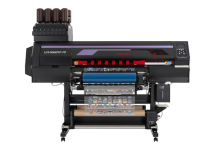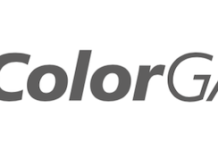Ilisna O’Reilly, Sales Manager Southern Africa at NUtec Digital Ink, discusses the importance of pairing media, ink and adhesive for print applications.
In the large format industry today, especially in South Africa, and I am sure in other parts of the world as well, distributors are required to constantly look for alternative solutions in terms of textiles, self-adhesive and rigid substrates that are more attractive from a pricing, availability and lead time perspective.
Having said that, what impact do these lower cost substrates have on your business as a converter? The statement that not all substrates are the same is often misunderstood and converters need to ensure that their product selections in terms of the printer, ink type and application is thoroughly tested and quality approved before taking on projects where the application could potentially fail. Different manufacturers use different raw materials and often, even though the media is manufactured with a specific ink type in mind and even recommended for certain ink types, it is not guaranteed that it is in fact compatible.
When choosing which products to select for a project, whether recurring or new, it’s important to test different options of the type of material you are considering. Once you have procured these samples, you need to ensure firstly that the ink you are using adheres to the substrate you have chosen and secondly, if it’s an adhesive product that the adhesive is suitable for the surface it is going to be applied to. If one vinyl worked for all applications, why would we have so many different monomeric, polymeric and cast films with either semi-permanent, removable, permanent, hi-tac, low tac or repositionable adhesives?
The same goes for ink. No ink type is suitable for every substrate, and it is important to ensure that your media choice works with the ink and the printer you are using. There may be media types that are not suitable with the inkset you are using, and this is why converters must work with the print operator and project manager to ensure that their substrate choice is best suited to cover all the aspects of the project.
I am not saying that more cost-effective media has no place in the market, but customers must be mindful of the fact that using sub-standard media could affect the overall quality of work you put out in the market and both converters and customers need to understand the risks associated with lower cost, possibly inferior products.
Below are critical considerations in the large format printing industry, where the push for cost-effectiveness must be balanced against maintaining quality and reliability:
1. Impact Of Low Cost Substrates On Converters
Risk of incompatibility: lower cost substrates may lack uniform quality, leading to potential issues such as ink adhesion problems, colour inconsistencies or application failures. This creates risks for converters who may face rework costs or reputation damage.
Increased testing requirements: converters need to invest time and resources in testing these substrates with their specific printers and inks. This adds operational costs and may offset some savings from cheaper materials.
2. Importance Of Testing And Compatibility
Adhesive performance: the wide array of adhesives in the industry highlights the importance of matching the substrate to the application surface. Misalignment here can result in peeling, poor adhesion or residue problems.
Ink and substrate compatibility: the need to match ink types (e.g. solvent, UV, or water-based) with specific substrates underscores the complexity of ensuring consistent output, particularly when switching to new or unfamiliar materials.
3. Education And Collaboration With Stakeholders
Converters must work closely with print operators, designers and project managers to align on the suitability of chosen materials for specific projects. This collaboration helps mitigate risks and sets clearer expectations.
It is essential to educate customers on the potential risks and limitations of using sub-standard or cheaper alternatives, ensuring informed decisions.
4. Strategic Use Of Media
While lower cost substrates have their place (e.g. for short-term or low-risk applications), understanding their limitations and ensuring proper testing is vital. Strategically choosing these substrates for non-critical projects can help maintain margins while safeguarding quality for high-value applications.
5. The Nuanced Role Of Manufacturers And Distributors
Distributors and manufacturers have a responsibility to provide clear technical specifications, guidelines and sample testing opportunities. This helps converters make informed choices.
The variability in raw materials between manufacturers makes due diligence a necessity. This is especially important in regions where logistical challenges and longer lead times can exacerbate issues with substrate quality or availability.
Ultimately, cost savings should not come at the expense of quality. Converters must adopt a balanced approach, ensuring that every substrate and ink pairing undergoes rigorous testing and aligns with the project’s performance requirements. By fostering collaboration and education within the value chain, converters can navigate the challenges posed by an ever-evolving market while maintaining the integrity of their work.
C1W Initiative
Change One Woman (C1W) aims to empower women in the branding, print and signage industries. As part of this initiative, Sign Africa would like to spotlight women-authored content like this piece. If you have any trend/business articles related to the signage, branding and printing industries, please email content to: meggan@practicalpublishing.co.za. Join the C1W Facebook page here, and LinkedIn group here.
| LOCAL DISTRIBUTOR NUTEC DIGITAL INK Tel: +27 21 763 6990 Email: info@nutecdigital.com Website: http://www.nutecdigital.com  |















